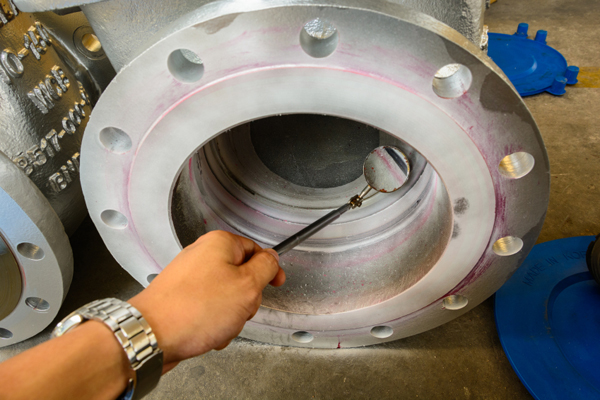Unparalleled Accuracy: Welding Inspection Service You Can Depend Upon
Revealing the Diverse Series Of Welding Solutions and Their Benefits
As industries remain to demand and advance accuracy in their production procedures, the importance of welding services has come to be increasingly noticable. From the adaptability of arc welding to the efficiency of MIG welding, and the complex job completed through TIG welding to the accuracy of laser welding, the array of welding methods available is vast. Each method brings its own set of benefits and applications, dealing with a large range of demands across various fields. Comprehending these varied welding services and their advantages can give useful understandings into optimizing fabrication processes and attaining remarkable results.
Kinds of Welding Services
One usual type is MIG welding, also recognized as Gas Metal Arc Welding (GMAW), which makes use of a cable electrode to sign up with metals together. One more extensively made use of technique is TIG welding, or Gas Tungsten Arc Welding (GTAW), which uses a non-consumable tungsten electrode to create a clean and specific weld.
Furthermore, there is Stick welding, or Shielded Metal Arc Welding (SMAW), which is understood for its simpleness and effectiveness, especially in windy or outdoor problems. This approach is typically used in construction and pipe welding. There is Flux-Cored Arc Welding (FCAW), which is a functional procedure suitable for thick materials and can be utilized in both automated and semi-automatic applications. Each sort of welding solution has its strengths and is chosen based upon factors such as material kind, thickness, and the particular requirements of the project available.
Advantages of Arc Welding
Arc welding provides a multitude of advantages that provide to different industrial requirements and needs. Additionally, arc welding is understood for its high welding rates, which can significantly boost efficiency in manufacturing processes.
One more trick advantage of arc welding is its capacity to produce solid and resilient welds. Arc welding additionally produces accurate and clean welds, decreasing the requirement for added ending up work.
Advantages of MIG Welding
With an emphasis on effectiveness and durability in welding processes, MIG welding offers an unique collection of benefits that match the versatility and toughness discovered in arc welding. MIG welding, or Gas Metal Arc Welding (GMAW), is understood for its speed and ease of usage. The process involves feeding a cord electrode with a welding gun, which is after that thawed and utilized to sign up with the base products together. One of the vital advantages of MIG welding is its high welding speeds, making it a recommended choice for jobs that require fast turnaround times.
Furthermore, MIG welding generates tidy welds with minimal splatter, minimizing the demand for comprehensive clean-up after the welding process. The convenience of MIG welding permits welding a large range of products, including light weight aluminum, stainless steel, and moderate steel. This flexibility makes MIG welding appropriate for various markets, from vehicle to construction.
In addition, MIG welding is known for its high deposition rates, indicating even more product can be transferred in a shorter amount of time compared to other welding processes. This leads to enhanced performance and cost-effectiveness for tasks that require huge quantities of welds. Generally, the benefits of MIG welding make it a valuable technique for achieving sturdy and efficient welds across various applications.

Discovering TIG Welding Conveniences
TIG welding, additionally referred to as Gas Tungsten Arc Welding (GTAW), offers a distinct collection of benefits that satisfy accuracy and control in welding hop over to these guys applications. Among the key benefits of TIG welding is its ability to create high-grade, clean welds without the need for filler product. This makes it ideal for welding thin products where appearances and accuracy are critical, such as in the aerospace and automobile sectors. Additionally, TIG welding supplies exceptional control over the warm input, causing marginal distortion of the workpiece.
Additionally, TIG welding can be used on a broad range of metals, including stainless steel, titanium, copper, and aluminum, making it a functional choice for various welding projects. The process also permits for welding in different placements, supplying versatility in difficult welding scenarios.
Advantages of Laser Welding

Another benefit of laser welding is its versatility in collaborating with a large range of products, including steels, plastics, and also dissimilar materials. This adaptability makes laser welding ideal for diverse markets such as automotive, aerospace, electronic devices, and clinical devices. The non-contact nature of laser welding additionally reduces contamination, making it a clean and environmentally friendly welding approach.
Additionally, laser welding makes it possible for complicated and detailed weld geometries that might be testing to attain with standard welding strategies. This ability opens up brand-new design possibilities and enables the manufacturing of lighter and much more innovative components - Welding Inspection Service. In general, the benefits of laser welding make it a recommended option for several manufacturing applications seeking high precision and performance
Conclusion

Arc welding supplies solid and durable welds, while MIG welding uses effectiveness and flexibility. TIG welding makes certain precise and tidy welds, and laser welding provides high check my blog accuracy and rate.
From the convenience of arc welding to the efficiency of MIG welding, and the complex job achieved via TIG welding to the precision of laser welding, the array of welding methods offered is huge. One usual kind is MIG welding, additionally understood as Gas Metal Arc Welding (GMAW), which utilizes a wire electrode to sign up with steels together. Additionally, arc welding is understood for its high welding rates, which can dramatically raise efficiency in producing procedures.With an emphasis on efficiency and durability in welding processes, MIG welding offers a distinctive collection of advantages that match the flexibility and strength found in arc welding.TIG welding, additionally understood as Gas Tungsten Arc Welding (GTAW), offers a distinctive set of advantages that provide to precision and control in welding find this applications.